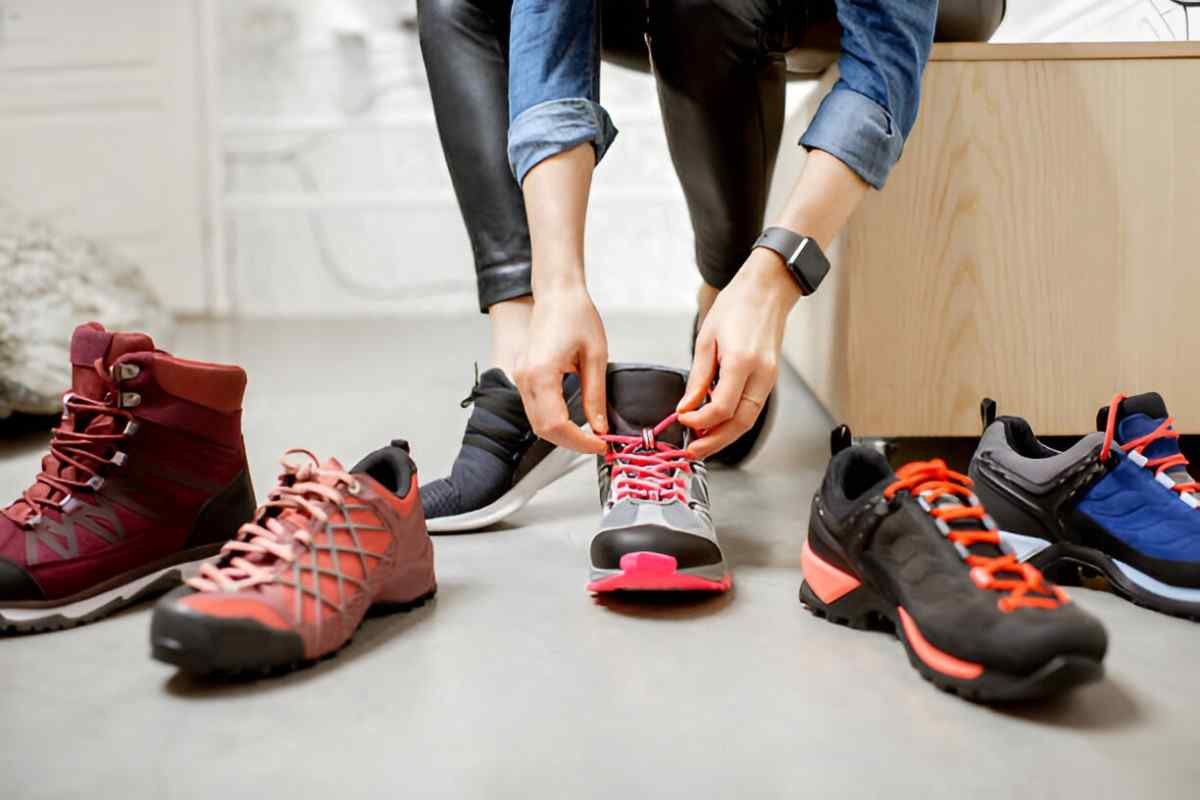Finding the right running shoes is more than just a shopping decision; it’s about making an investment in your health and performance. Whether you’re a beginner or a seasoned runner, the shoes you choose will have a significant impact on your comfort, speed, and injury prevention. In this guide, I will walk you through everything you need to know to buy the best running shoes for your needs. From understanding your foot type to comparing brands and features, this is your ultimate guide to making an informed choice.
Table of Contents
Understanding Your Foot Type
The first step in choosing the right running shoes is understanding your foot type. Your foot structure and biomechanics influence how you run and what kind of support you need. Here’s how you can determine your foot type:
Wet Test
Take the “wet test” to identify your arch type:
- Wet the bottom of your foot.
- Step onto a piece of cardboard or paper.
- Examine the imprint.
What the Imprint Tells You:
| Arch Type | Imprint Description | Shoe Recommendation |
|---|---|---|
| Low Arch (Flat) | Entire foot visible | Stability or motion-control shoes |
| Normal Arch | Moderate curve on inner side | Neutral shoes |
| High Arch | Narrow band connecting heel/toes | Cushioned shoes |
Know Your Running Style
How your foot strikes the ground when you run—known as your gait—is another critical factor. Most people fall into one of three categories:
Types of Pronation
| Pronation Type | Description | Shoe Features Needed |
|---|---|---|
| Overpronation | Foot rolls inward excessively | Stability or motion-control shoes |
| Neutral | Balanced foot strike | Neutral shoes |
| Supination | Foot rolls outward | Cushioned shoes |
Understanding these categories can help you match your running shoes to your biomechanics.
Key Features to Look For
Once you know your foot type and running style, consider the features that will make a pair of shoes right for you. Here’s what I recommend focusing on:
Cushioning
The midsole is where most of the cushioning happens. If you’re a long-distance runner, prioritize shoes with ample cushioning to absorb impact.
Stability
Stability features help align your foot and reduce excess movement. These are particularly important for overpronators.
Fit
A snug but comfortable fit is essential. Ensure there’s about a thumb’s width of space in the toe box.
Breathability
Mesh uppers allow air to circulate, keeping your feet cool and dry.
Durability
Check the outsole material—rubber is more durable, while blown rubber is lighter but less long-lasting.
Comparing Running Shoe Types
Running shoes come in various categories, each suited for specific terrains and activities. Below is a quick comparison to help you decide:
| Shoe Type | Best For | Key Features |
|---|---|---|
| Road Running | Paved surfaces | Lightweight, cushioned midsoles |
| Trail Running | Uneven, rugged terrain | Aggressive outsoles, reinforced uppers |
| Racing Shoes | Speed and competition | Lightweight, minimal cushioning |
| Cross Trainers | Gym and short runs | Versatile design, moderate cushioning |
Choosing the Right Size
One common mistake people make is sticking to their standard shoe size. Running shoes often require a slightly larger fit because your feet swell during exercise. Here’s how I ensure a perfect fit:
- Try shoes in the afternoon or evening when your feet are at their largest.
- Wear the same socks you plan to use while running.
- Walk and jog around the store to test comfort and fit.
- Make sure your toes have enough room to move but don’t slide forward.
Testing Shoes Before You Buy
If you can, always test the shoes before making a purchase. Here’s what I pay attention to:
- Comfort: Does it feel good right out of the box? Running shoes should not require a break-in period.
- Weight: Lightweight shoes make running easier, but heavier shoes offer more support.
- Flexibility: Bend the shoe to see if it’s flexible enough for your needs.
Popular Running Shoe Brands: Pros and Cons
Every brand has its strengths and weaknesses. Here’s a quick comparison:
| Brand | Pros | Cons |
|---|---|---|
| Nike | Lightweight, innovative designs | Expensive |
| Adidas | Durable, stylish | Limited options for wide feet |
| Brooks | Excellent support and stability | Heavier than some competitors |
| Asics | Reliable cushioning | Outdated designs |
| New Balance | Wide range of sizes | Inconsistent durability |
Online Shopping Tips
Buying running shoes online can save time, but it comes with risks. Here’s how I minimize them:
- Read reviews from runners with similar needs.
- Check the return policy for easy exchanges.
- Use size charts and measure your feet accurately.
Replacing Your Running Shoes
Running shoes don’t last forever. I replace mine every 300-500 miles, depending on the type and usage. Signs that it’s time to replace your shoes include:
- Worn-out soles
- Uneven wear patterns
- Reduced cushioning
- Persistent discomfort
Final Thoughts
Choosing the best running shoes is a process that involves understanding your unique needs, trying different options, and paying attention to the details. By considering factors like foot type, running style, and key features, you can find shoes that enhance your performance and protect your health. I hope this guide helps you make a confident and informed decision. Happy running!





